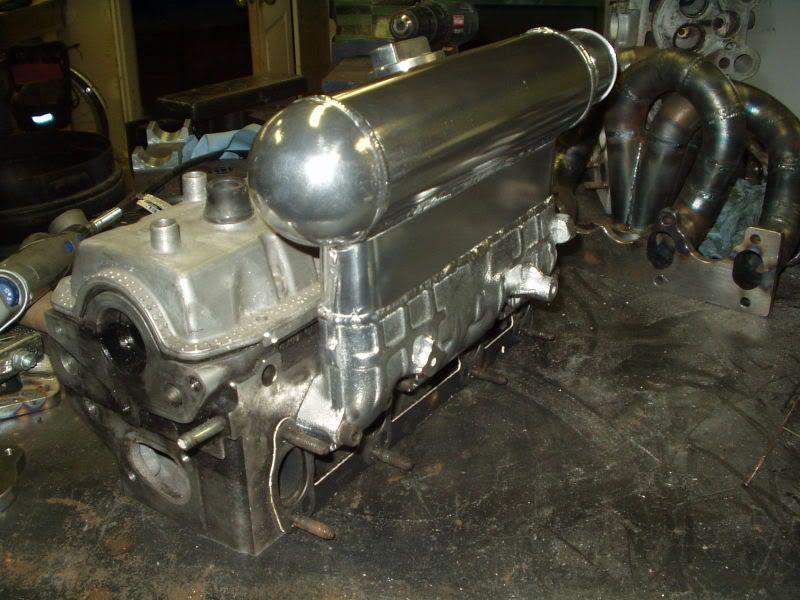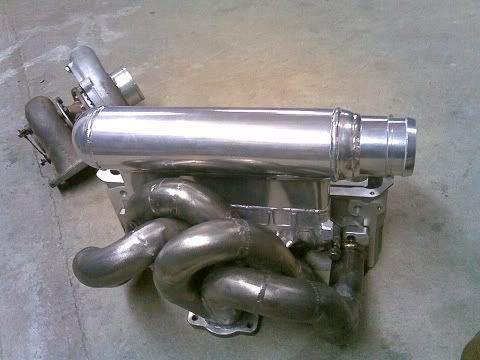Yes, biodiesel will eat the engine bay fuel lines, and the injector pump seals. I don't know if it will dissolve any parts associated with the fuel tank yet, as I haven't had problems with that.
Viton seals and fuel lines will fix this problem permanently, and I recommend going with them anyways (even if you keep using regular diesel). Any old diesel engine you find for a good price will almost inevitably have old fuel lines that should be replaced, and upgrading the seals on the IP to viton is good insurance anyways....
I do not recommend the 50/50 mix waste vegetable oil and petroleum diesel as an alternative to biodiesel or correctly heated vegetable oil unless you live in death valley. Even at 50/50 it will be way too thick to be pumped or injected properly, and it will coke up your injectors and rings causing engine problems later on. I think that vegetable oil is okay in an engine if you design or install a system that meets this criteria:
-The fuel temperature is nearly at the boiling point of water (100C) at ANY time vegetable oil is being injected into the engine (this means you cannot start cold on WVO or any mixture of WVO). This means coolant heat, and high current electric heating.
-The oil has been filtered to a particle size of no larger than 1 micron before putting in the tank.
-The oil is either new (not used waste oil) or has been verified to be free from contaminants.
-The oil has had any/all water removed, by heating the oil to boil off any water.
Even if you do all of the above, there is not much data out there about how WVO affects long term engine wear. This doesn't mean that it will cause problems, just that nobody knows for sure. Elsbett AG in germany has been modifying VW diesels to run on WVO since about 1980, and they have a reliable system that uses extensive heating, different injectors, and different glow plugs:
http://www.elsbett.com/us/elsbett-conversion-technology/cars-and-vans.html
Biodiesel has been tested extensively and shown not to cause long term problems.
Mercedes diesels injection systems are a lot tougher than Volvo diesels, but if you look at the Mercedes forums you will see tons of people who have ruined their engines and injection systems by running waste oil, and Mercedes enthusiasts are upset about how many good classic mercedes are being damaged with poorly thought out cheap fuel experiments.
Viton seals and fuel lines will fix this problem permanently, and I recommend going with them anyways (even if you keep using regular diesel). Any old diesel engine you find for a good price will almost inevitably have old fuel lines that should be replaced, and upgrading the seals on the IP to viton is good insurance anyways....
I do not recommend the 50/50 mix waste vegetable oil and petroleum diesel as an alternative to biodiesel or correctly heated vegetable oil unless you live in death valley. Even at 50/50 it will be way too thick to be pumped or injected properly, and it will coke up your injectors and rings causing engine problems later on. I think that vegetable oil is okay in an engine if you design or install a system that meets this criteria:
-The fuel temperature is nearly at the boiling point of water (100C) at ANY time vegetable oil is being injected into the engine (this means you cannot start cold on WVO or any mixture of WVO). This means coolant heat, and high current electric heating.
-The oil has been filtered to a particle size of no larger than 1 micron before putting in the tank.
-The oil is either new (not used waste oil) or has been verified to be free from contaminants.
-The oil has had any/all water removed, by heating the oil to boil off any water.
Even if you do all of the above, there is not much data out there about how WVO affects long term engine wear. This doesn't mean that it will cause problems, just that nobody knows for sure. Elsbett AG in germany has been modifying VW diesels to run on WVO since about 1980, and they have a reliable system that uses extensive heating, different injectors, and different glow plugs:
http://www.elsbett.com/us/elsbett-conversion-technology/cars-and-vans.html
Biodiesel has been tested extensively and shown not to cause long term problems.
Mercedes diesels injection systems are a lot tougher than Volvo diesels, but if you look at the Mercedes forums you will see tons of people who have ruined their engines and injection systems by running waste oil, and Mercedes enthusiasts are upset about how many good classic mercedes are being damaged with poorly thought out cheap fuel experiments.
Isn't biodiesel a lot more aggressive on the fuel-lines?
Last edited:

 I think you'd want to time the runners to 2400RPMs. That would probably be the most beneficial seeing as its where peek torque occurs already and its a pretty good cursing speed in fifth. What do you guys think?
I think you'd want to time the runners to 2400RPMs. That would probably be the most beneficial seeing as its where peek torque occurs already and its a pretty good cursing speed in fifth. What do you guys think?



